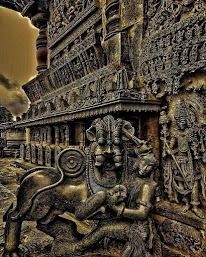Hoysala Empire
The Hoysala Empire was a South Indian kingdom that existed between the 10th and 14th centuries CE. It was centered in the region that is now Karnataka state in India. The Hoysala dynasty ruled over a large portion of the Deccan plateau and was known for its unique style of temple architecture.
The empire was founded by Sala, a chieftain who established his capital at Belur. The Hoysalas initially served as vassals to the Western Chalukyas, but gradually gained independence and expanded their territory through a series of successful military campaigns.
Under the rule of King Vishnuvardhana, the Hoysalas reached the height of their power and prosperity. The king was a patron of the arts and literature, and the period saw a flourishing of Kannada literature. The Hoysalas also built several magnificent temples, including the famous Chennakesava Temple at Belur and the Hoysaleswara Temple at Halebidu, which are still considered to be some of the finest examples of Indian temple architecture.
The Hoysala Empire declined in the 14th century, and was eventually conquered by the Vijayanagara Empire. Despite its relatively short lifespan, the Hoysala Empire left a lasting legacy through its art and architecture, which continue to inspire and influence contemporary artists and architects.




.jpeg)

.jpeg)
0 Comments